Unless you’re caught off-guard, or have someone handy to wrap your arms around, one of the problems of a posed portrait is what to do with your hands. Some photographers recommend crossing your arms. Others suggest holding an imaginary euro coin. The more generous of them give you one. This problem clearly goes out the window if you have a gun.
In Amelia Stein's powerful portraits of members of the Defence Forces from the 3 Inf Bn (which is how they like to write it, but spells out as Third Infantry Battalion), guns, books, swords and a dog are among the items held. The exhibition's title, The Bloods, is a nickname for the battalion, and the show inaugurates the new home for Kilkenny's Butler Gallery. It is also the culmination of five years' work by the Dublin and Mayo-based photographer.
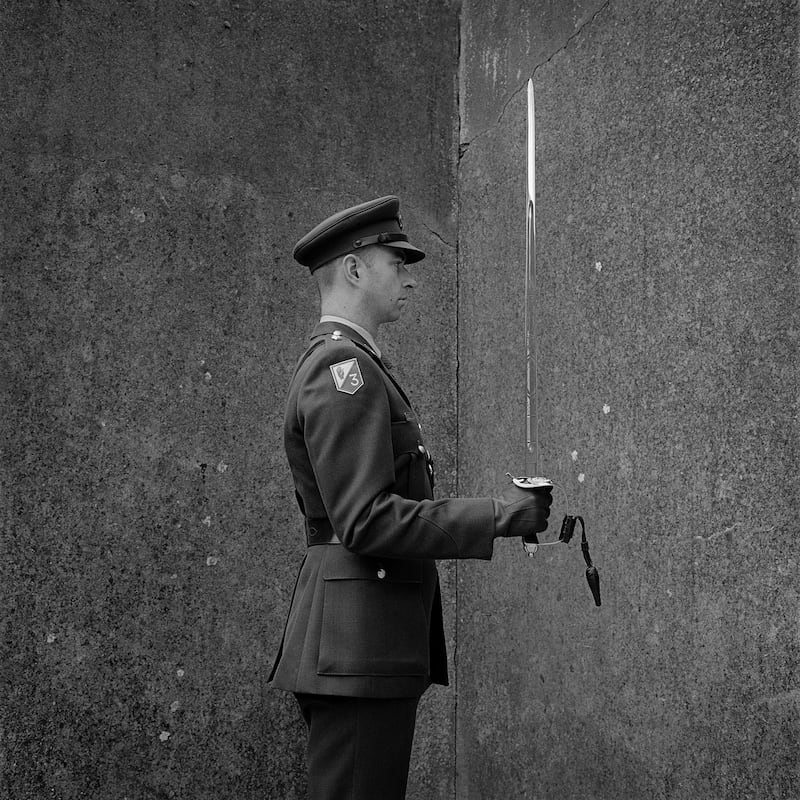
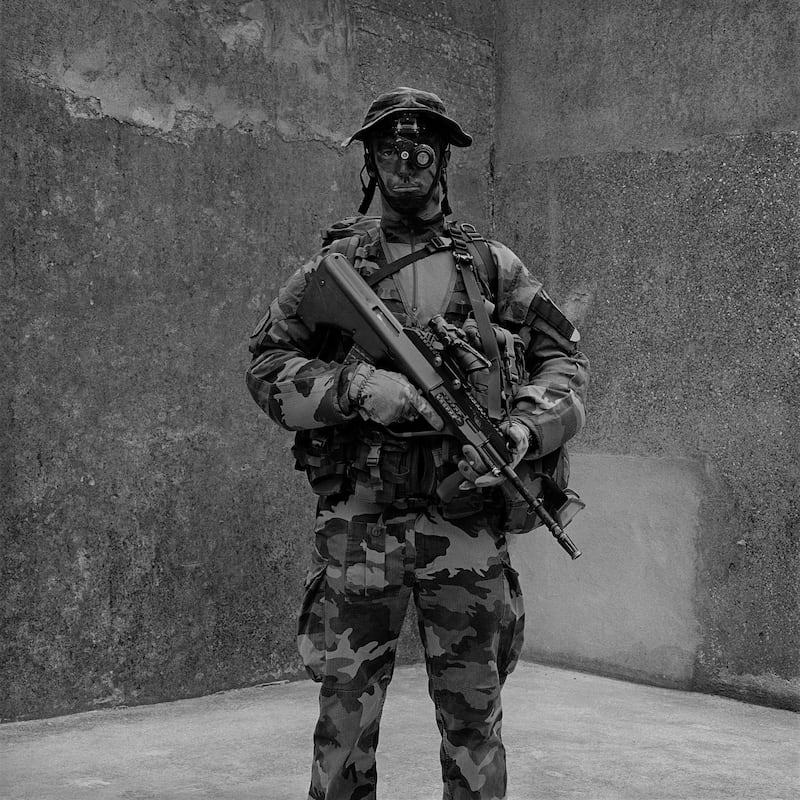
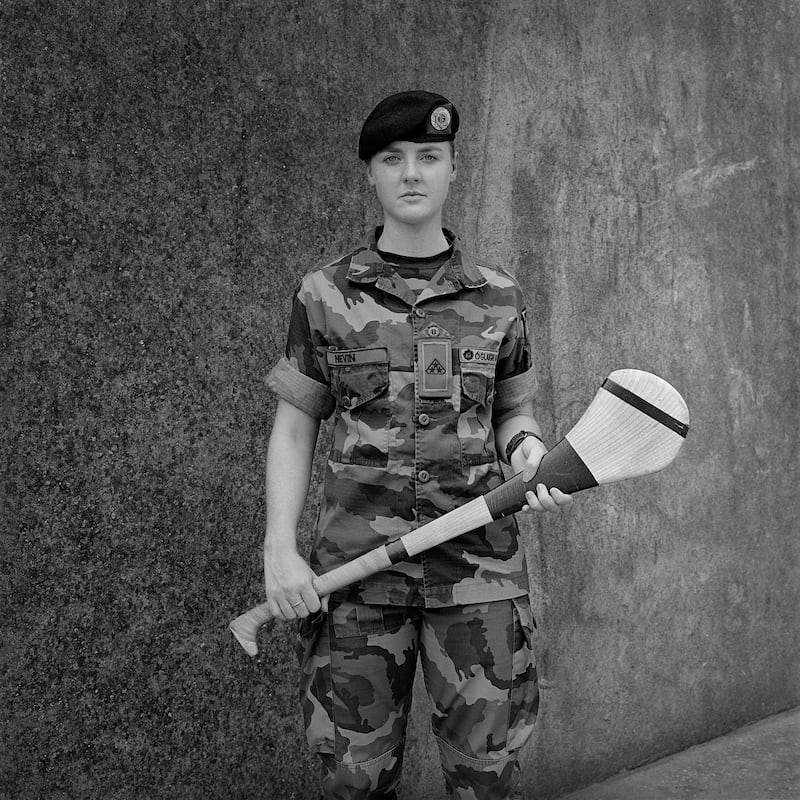
The 58 uniformed figures include snipers, veterans, a chef, piper, platoon commander, mountaineering instructor, camogie player, and an international soccer player. There is also a nuclear, biological and chemical specialist. “During the early days of Covid, people were re-evaluating roles in society,” says Stein. “Nurses, supermarket shelf stackers, and many of the so-called small trades, all became essential workers, people vital to the process of maintaining some form of new normal.”
The army are a key part of that. Stein's project began when she went to Kilkenny with her partner, the artist Mick O'Dea, who spent three years as artist-in-residence at the Kilkenny Arts Festival.
“I was the accidental tourist,” she says, smiling at the thought. Part of that tourism was a tour of the Kilkenny Barracks, where O’Dea was working on his painting project. “We walked into a handball alley, and it was like a lightbulb moment for me.”
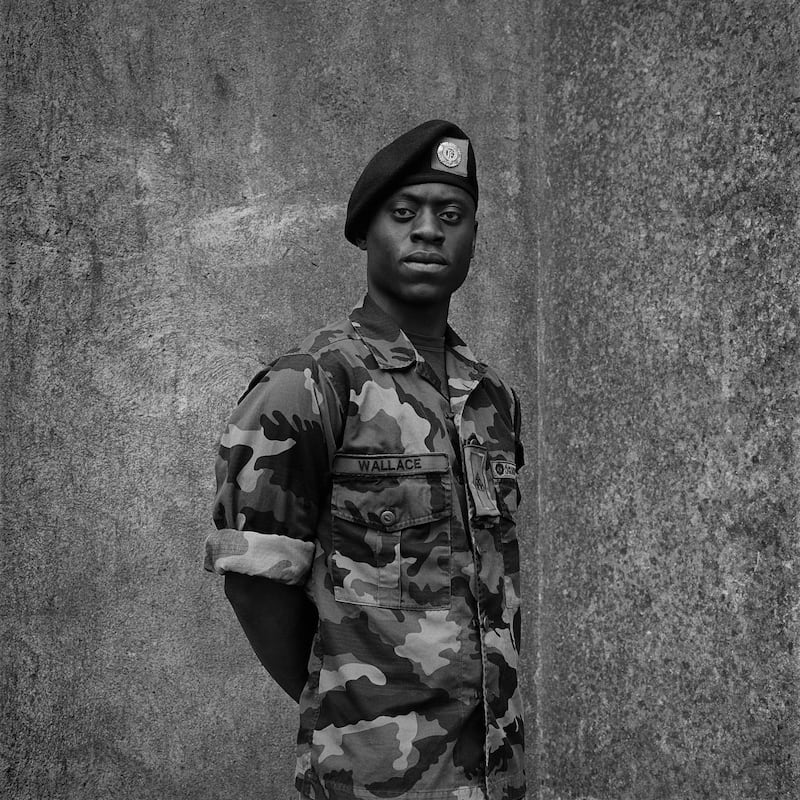
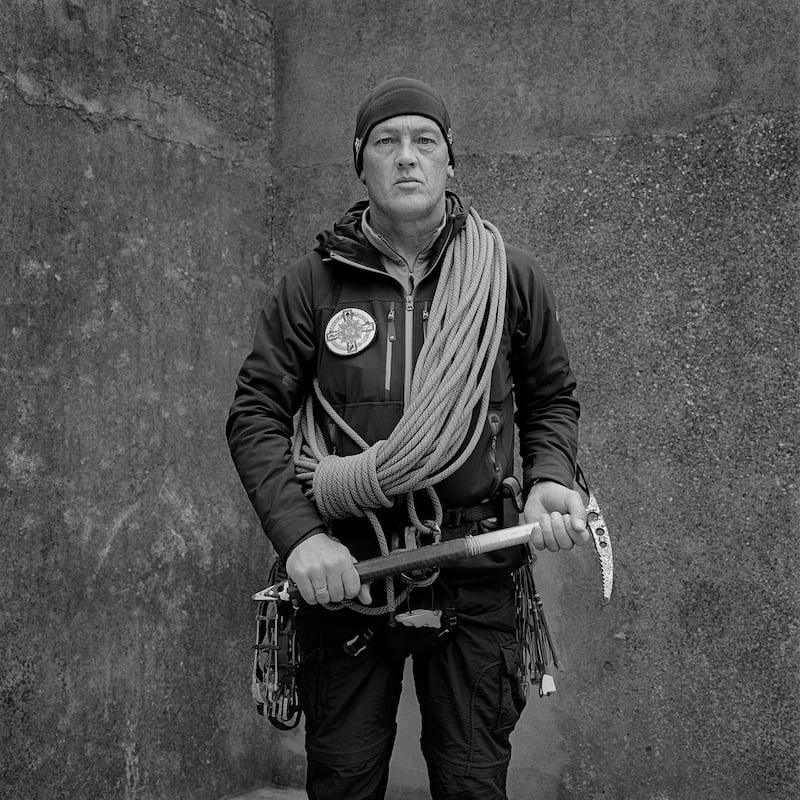
In the works in the Butler, the handball alley becomes a uniform backdrop for the men and women in uniform. I wonder what it’s like to photograph in that context. How different is it? “Those guys are all trained for ceremonial duty,” says Stein. “You see them when they initially arrive: they’re handing in their clothes, putting on a uniform, learning how to stand, how to march, how to work as a team.”
Maybe it’s a hangover from the tedium of my own school uniform, or maybe it’s the deeper anxiety that news images from around the world engender: of men and women in uniform acting to enforce oppressive and frequently violent rule; but I generally find uniforms troubling. In Stein’s suite of works it is somehow different. Perhaps that is because armies are not the same the world over, and the Irish Defence Forces are viewed differently, as an aid to civil society, not contra (as we’re seeing in some parts of the US just now). Maybe the way we view our armies reflects the relationship of state and people at any given time. As a neutral country with a functioning democracy, the army’s role is to support, protect, keep the peace. It is also ceremonial.
Ceremonial and supportive it may be, but it is also deadly serious. Stein describes witnessing “the act of being aware of your body when you put on that uniform. Of knowing that you represent your country – you wear that uniform with pride. We are renowned for our army’s contributions to the UN. They are highly respected, highly trained. Maybe,” she pauses to think, “maybe we, as civilians, don’t understand how complex that is.
“When I went in,” she continues, “I knew nothing, I thought they were just ‘lads’. But you meet these people who have lived extraordinary lives, had extraordinary experiences, and have taken on the mantle of the responsibility of their profession. And they’re doing their masters in this, their doctorate in that. The army can take you where you want to achieve personally.”
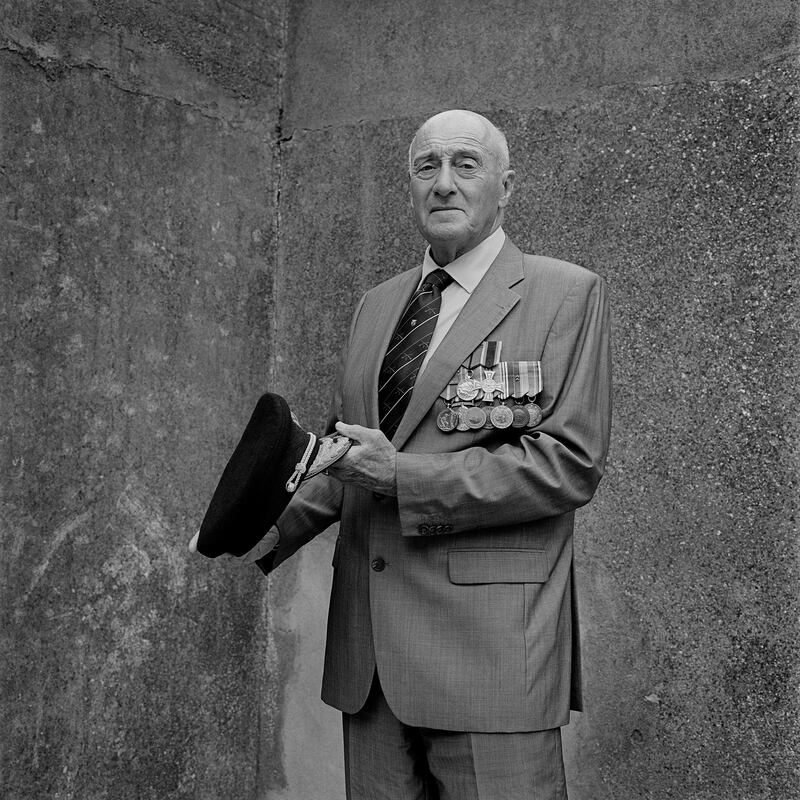
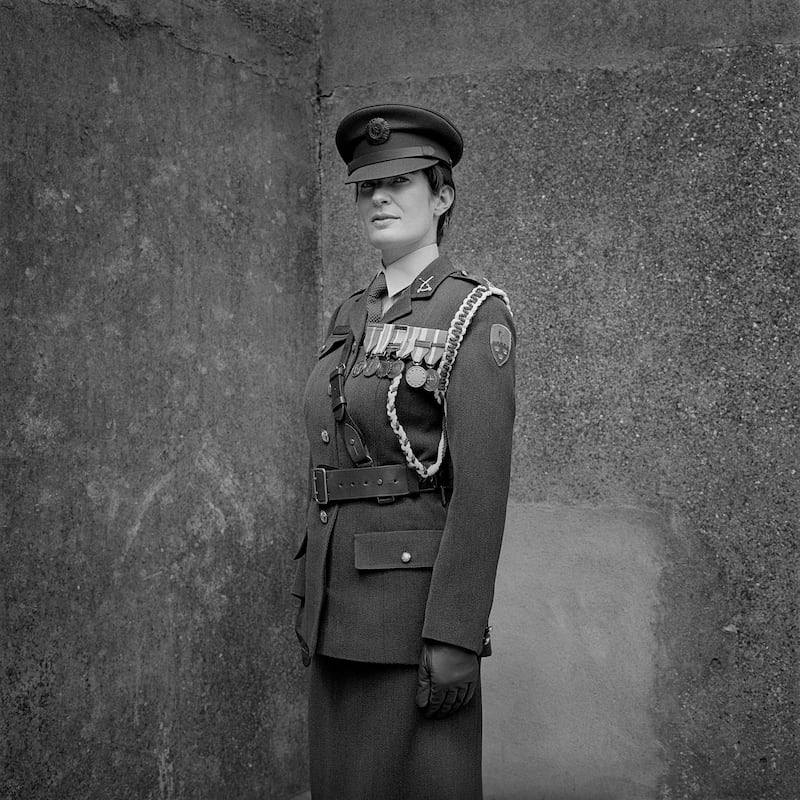
It also makes for very good subjects for photographs: the ceremonial training helps, these guys know how to stand. Working with a manual Hasselblad camera, every shot is vital. “Film is expensive,” explains Stein, going on to describe how working with film slows everything down.
“It’s a really interesting way to work. I have the digital equipment now, but there’s nothing like the deliberateness of opening the back of the camera, winding the film on, setting the exposure. There’s a phrase: ‘don’t think on film’; you want to take just one photo, and you want to take the correct one. So you focus your mind first. And if it’s not correct, don’t push the button.”
Stein describes how her subjects would come in through a door at the back of the handball alley, and outside, everyone would line up to be shot. We laugh at the turn of phrase. In fact, Stein laughs frequently, and our conversation is peppered with her saying something great, and then telling me: “don’t write that!” as if her evident and utter seriousness about her work might be diminished by her wit.
“You need to surround yourself with people who have the same intensity about black-and-white photography, about deliberate work. In these days of social media, that’s what really interests me, that subtle use of black and white.” Stein is incredibly serious, but her wit is a part of the power of her work: not in the sense of it as humour, but as humanity.
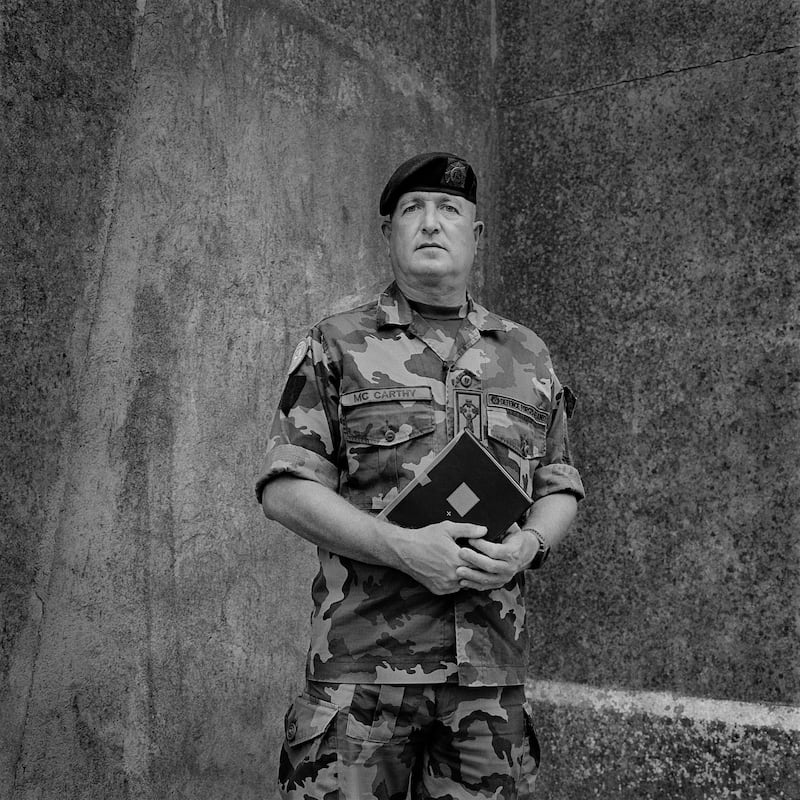
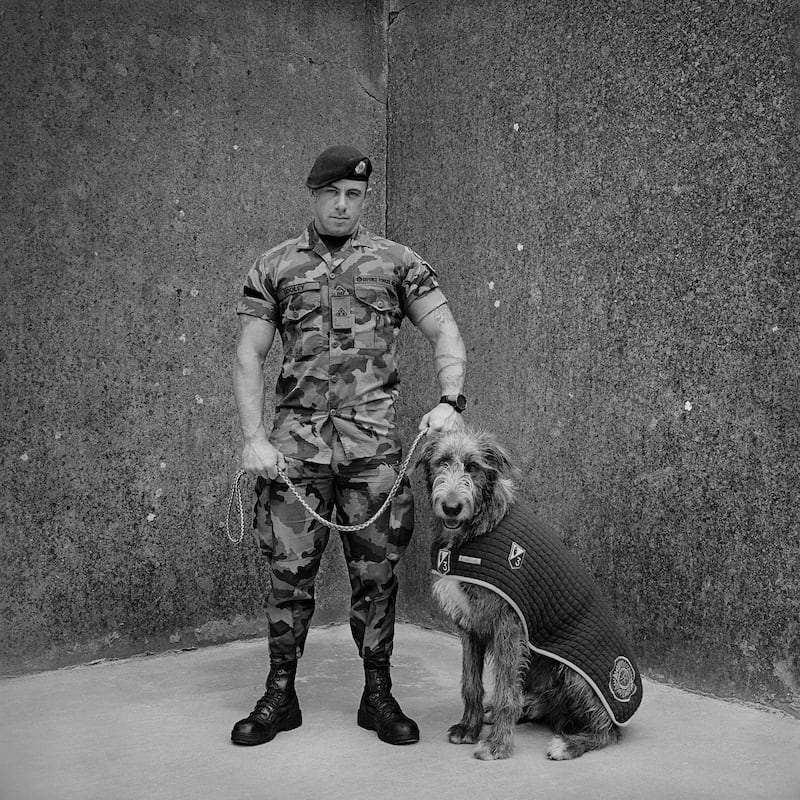
In the gallery, the walls are hung with images of people in uniform, but it is the people one sees first. The variety, not the uniformity. The portraits also represent the diversity of Irish society. Different ages, shades of faces, men and women. “You can’t be what you can’t see,” says Stein, passionate about the need to show women role models, to make visible their options.
“When you see a woman with a clipboard, do you think she’s a secretary or the head of department?”
Our conversation moves on to inspirations and connections, about what it takes to make work, and about the serendipities that can help to realise projects. In this case, that includes the opening of the new Butler Gallery. She talks about travelling to find new things, about working with Guillaume Geneste to create her silver gelatin prints in Paris, and with Dominic Turner in Dublin for her archival pigment prints.
“We eat from the same plate,” she says of her colleagues and collaborators. “The black-and-white obsession. We all play the same minority sport. It’s hard to explain to people, you’re constantly evolving how you express the image shot on film. It’s a journey of learning how to look at things.”
[ Butler GalleryOpens in new window ]
New spaces: Kilkenny Evan’s Home
Highly respected, but incredibly tricky to install work in, the spaces of the Butler Gallery’s old home in Kilkenny Castle are a world away from the new McCullough Mulvin-designed galleries at the historic Evan’s Home, just a stone’s throw away. “I loved the Butler Gallery’s spaces,” agrees director Anna O’Sullivan, “but this is allowing me to dream.”
People don’t always realise how strongly architecture inflects how we see an individual work or exhibition. We’re standing in the main gallery, which is in the new part of the complex. After the entrance, a coffee shop and gift shop lead through a corridor to open to a gallery that is 100sq m, with a lofty ceiling height of just under six metres. The compression-release thing that good architects revel in, provides the “Wow” that those who design contemporary galleries also so love.
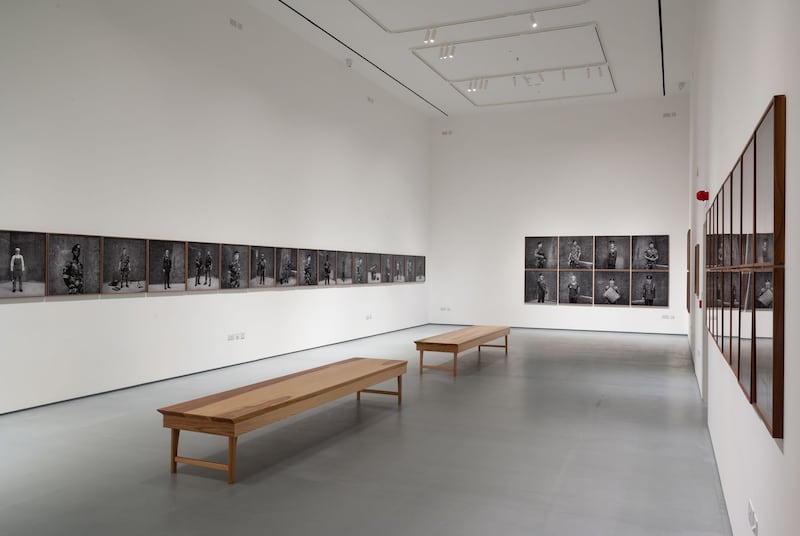
With the hum of a team getting everything ready for opening day, the acoustics are tricky. The height and hard surfaces create resonances and echoes that will need to be dampened down for sound works, but there’s not much a curator such as O’Sullivan can’t solve. After all, she has brought internationally renowned artists and exhibitions to the four small rooms of the old Butler – and triumphed.
"The size of contemporary art dictates the space these days," she says, telling me of her plans to bring huge video works by Richard Mosse to the gallery in August of next year, which wouldn't have been possible in the castle. But then she goes back to recall how the four spaces at the old Butler could allow artists to punctuate their work.
We continue to the older part of the building, in the beautifully managed renovation. There is an exhibition of works by Tony O'Malley and Jane O'Malley, including a beautifully gentle work by Jane, showing the husband and wife artists sipping coffee at their Kilkenny home, accompanied by a black cat, and surrounded by flowers. Elsewhere, works from the collection add a lovely play on new and old, such as the witty pairing of pieces by Mainie Jellett and Aideen Barry. "I think Mainie Jellett would have appreciated that," says O'Sullivan.
Outside, works by Alan Counihan and the late Janet Mullarney are the beginnings of a sculpture garden.
They are also part of Connected, a new craft trail of over 30 works, that runs throughout Kilkenny city. Meanwhile, another gallery is adding to Kilkenny's art sites. The Kilfane Glebe House Studio (open Friday to Sunday, and by appointment, until August 30th) in Thomastown is housed in the former studio of artist Hughie O'Donoghue. Occasionally a wedding venue, it transmogrifies as a fantastic gallery. The exhibition, 6, features work by Mary Ann Gelly, Sinéad Lucey, Paul Mosse, Sheila Naughton, Eric Phillips and Lorenzo Tonti.












